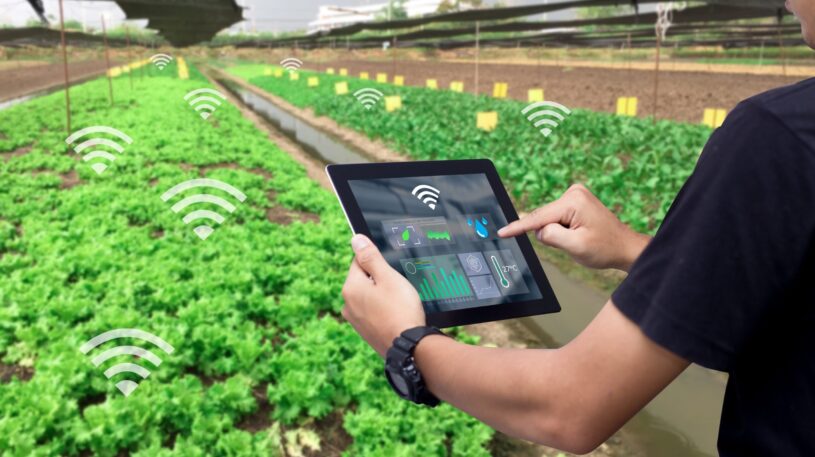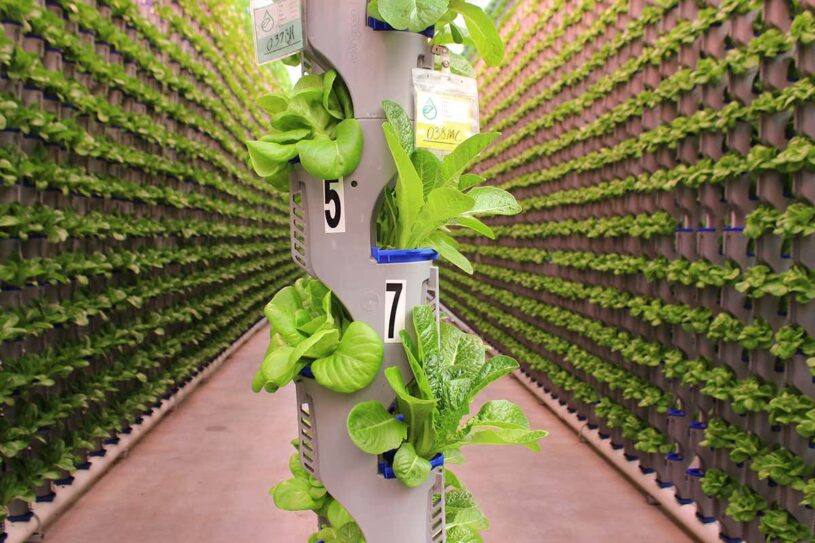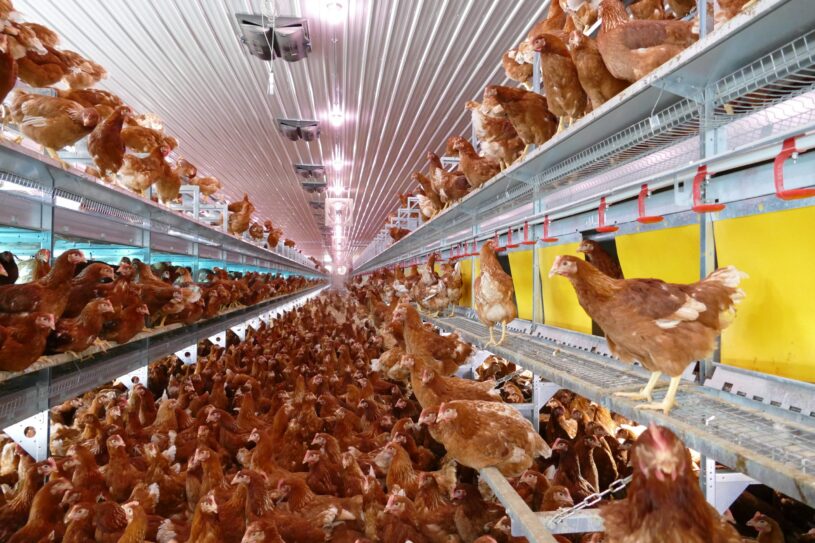Agriculture has been a fundamental aspect of human civilization for millennia, providing sustenance and livelihoods to communities worldwide. In recent decades, agriculture has undergone a profound transformation, largely due to advancements in technology. This article explores the pivotal role of technology in modern farming and its far-reaching impact on productivity, sustainability, and the future of agriculture.
Precision Agriculture
One of the most remarkable advancements in farming technology is precision agriculture, a game-changer that leverages data, sensors, and GPS technology to revolutionize farming practices. This modern approach consists of several key elements, each contributing to the efficiency and sustainability of agricultural operations:
Remote Sensing: Harnessing the capabilities of satellites and drones, precision agriculture equips farmers with real-time data on the health of their crops. These high-flying sentinels provide invaluable insights, enabling targeted interventions and significantly reducing resource wastage. Farmers can swiftly identify areas that require attention, from pest infestations to irrigation needs, leading to more precise and effective decision-making.
Data Analytics: In the era of precision agriculture, data is the farmer’s best friend. By meticulously analyzing data on weather patterns, soil conditions, and the status of their crops, farmers can make informed decisions at every stage of the farming process. This wealth of information empowers them to optimize planting schedules, irrigation plans, and harvesting strategies. With data analytics, they can fine-tune their practices for maximum yield and resource efficiency.
Variable Rate Technology (VRT): VRT is the technological marvel that tailors input application rates, such as the application of fertilizers and pesticides, to the specific needs of different areas within a field. The result? Not only significant cost savings for farmers but also a substantial reduction in the environmental impact of agriculture. VRT ensures that resources are used precisely where and when they are needed, minimizing excess use and waste. This smart technology is at the forefront of sustainable farming practices, safeguarding both profitability and the environment.
IoT (Internet of Things)

The Internet of Things (IoT) has ushered in a new era of farming, connecting devices, sensors, and equipment to the internet, and thus enabling a host of smart farming practices that enhance efficiency and sustainability. IoT applications in agriculture encompass a wide range of functionalities, each offering distinct advantages:
Smart Irrigation: IoT sensors, a linchpin of smart agriculture, are deployed to monitor soil moisture and weather conditions with remarkable precision. These sensors provide real-time data, enabling farmers to optimize their irrigation strategies. By doing so, they conserve valuable water resources and simultaneously reduce operational costs. Smart irrigation is a prime example of how IoT technology contributes to both environmental stewardship and the economic viability of farming.
Livestock Management: Wearable IoT devices designed for livestock management have transformed animal husbandry. These innovative devices, often attached to animals, continuously track vital parameters such as health, location, and behavior. With this real-time data at their disposal, farmers can swiftly detect any emerging health issues or irregularities in animal behavior. This early detection allows for timely intervention, ultimately improving animal welfare and boosting productivity. In the realm of livestock management, IoT technology is a critical ally for farmers in ensuring the well-being of their animals.
Supply Chain Management: IoT technology has also revolutionized supply chain management in the agricultural sector. From farm to consumer, IoT-enabled systems provide unprecedented traceability and transparency. Farmers, distributors, and consumers can access detailed information about the origin and journey of products through the supply chain.
This level of transparency enhances food safety and quality. In a world where consumers increasingly seek assurance about the authenticity and safety of their food, IoT technology provides a powerful tool for building trust and ensuring that food products meet the highest standards.
Robotics and Automation
The use of robotics and automation in farming has increased efficiency and reduced labor requirements. Some notable applications include:
Autonomous Tractors: These self-driving tractors can plant, plow, and harvest crops with precision, working around the clock.
Drones: Drones equipped with cameras and sensors monitor crop health, detect pests and diseases, and even spray pesticides with precision.
Robotic Harvesters: Robots can pick fruits and vegetables at the optimal ripeness, reducing food waste and ensuring higher-quality produce.
Vertical Farming and Controlled Environment Agriculture (CEA): Urbanization and limited arable land have spurred the development of vertical farming and CEA. These technologies involve growing crops in controlled environments, often indoors. Benefits include:
Year-Round Production: CEA facilities can produce crops year-round, regardless of weather conditions.

Water Efficiency: Closed-loop systems in vertical farming reduce water usage compared to traditional field farming.
Reduced Pesticide Use: Controlled environments minimize the need for pesticides and herbicides.
Genetic Engineering and Biotechnology: Genetic engineering and biotechnology have led to crop varieties with improved traits, such as disease resistance and increased yield. Some key developments include:
GMOs: Genetically modified organisms, like Bt cotton and herbicide-resistant soybeans, have become staples in modern agriculture.
CRISPR Technology: The CRISPR-Cas9 gene-editing tool allows scientists to precisely modify plant genes to enhance desired traits.
Gene Banks: These repositories store diverse genetic resources, preserving plant and animal biodiversity.
Sustainable Farming Practices: Technology has also empowered the adoption of sustainable farming practices. This includes:
Organic Farming: Digital tools help organic farmers manage their crops and soil health, reducing reliance on synthetic chemicals.
No-Till Farming: Technology supports no-till practices, conserving soil, reducing erosion, and sequestering carbon.
Renewable Energy: Solar and wind power are being used on farms, reducing carbon emissions and lowering energy costs.
Blockchain and Traceability: Blockchain technology is being utilized to provide transparency in the food supply chain. It allows consumers to trace the origin of products and verify their authenticity, enhancing food safety.
Poultry Equipment Supplies

Poultry farming, a vital component of modern agriculture, has also benefited from technological innovations. Poultry equipment supplies offer advanced solutions for managing poultry farms efficiently, from automated feeding and climate control systems to disease monitoring equipment. These advancements contribute to the welfare of birds, improve resource utilization, and enhance the overall sustainability of poultry farming.
The Future of Farming Technology
As technology continues to evolve, the future of farming looks increasingly promising. Potential developments include:
- AI and Machine Learning: Advanced AI algorithms can provide real-time crop disease detection and predict optimal planting times.
- 5G and Connectivity: High-speed, low-latency connectivity will enable more devices to communicate and operate in real-time on the farm.
- Sustainable Practices: Technology will further promote sustainable farming practices, reducing waste, conserving resources, and minimizing the environmental footprint of agriculture.
The integration of technology into agriculture has revolutionized farming practices, from planting to harvest and beyond. These advancements have made farming more efficient, sustainable, and resilient to the challenges posed by a growing global population and climate change.
Technology is not just a tool for modern farming; it is the key to a prosperous and sustainable future for agriculture. As innovations continue to emerge, the agricultural landscape will continue to evolve, offering exciting opportunities and solutions for the challenges that lie ahead.
